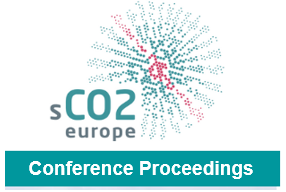Thermo-economic heat exchanger optimization for Electro-Thermal Energy Storage based on transcritical CO2 cycles
The Electro Thermal Energy Storage (ETES) based on thermodynamic cycles using transcritical CO2 was first developed by ABB corporate research [1]. The target being to set up a large-scale site-independent electricity storage system. The system has been reviewed and developed further by MAN-ES to an energy management system capable of storing not only electricity, but heat and cold as well.
The paper first presents the basic thermodynamic cycle layout, characterized by its heat pump and heat engine concept. Special attention is paid to the high-pressure (i.e. high-temperature) side of the system, where the rapid changes of sCO2 in heat capacity result in additional modeling complexity. The major challenge lays in the design of heat exchanger (HEX) that provides the best trade-off between cost and performance. On top of that, the novelty of using the same heat exchanger(s) for both charging and discharging cycles on high and low pressure sides of the cycles represents an interesting solution to improve the performance to cost ratio of the entire system. However, this comes at the expense of potential oversizing of the heat exchanger(s). The paper presents the steady state model developed to simulate both thermodynamic cycles. Using a constrained optimization approach, the solver is guided towards solutions where the required heat exchanger surface for both cycles is similar. The consequences of using the same heat exchanger for both cycles are presented for different ETES configurations, allowing identifying significant investment cost reductions and in some cases even improving the entire system’s performance. A significant reduction of up to 50% heat exchanger cost can be reached. Additionally, 14% of plant cost for a given round-trip efficiency can be obtained for certain system configurations.
Vorschau

Zitieren
Zitierform:
Sanz Garcia, Luis/Jacquemoud, Emmanuel/Jenny, Philipp (2019): Thermo-economic heat exchanger optimization for Electro-Thermal Energy Storage based on transcritical CO2 cycles. In: 3rd European Conference on Supercritical CO2 (sCO2) Power Systems 2019: 19th-20th September 2019. S. 353–362. Online unter: https://nbn-resolving.org/urn:nbn:de:hbz:464-20191004-160339-4.
Zitierform konnte nicht geladen werden.
Rechte
Nutzung und Vervielfältigung:
Dieses Werk kann unter einer Creative Commons Namensnennung 4.0 Lizenz (CC BY 4.0)
Creative Commons Namensnennung 4.0 Lizenz (CC BY 4.0)
genutzt werden.
